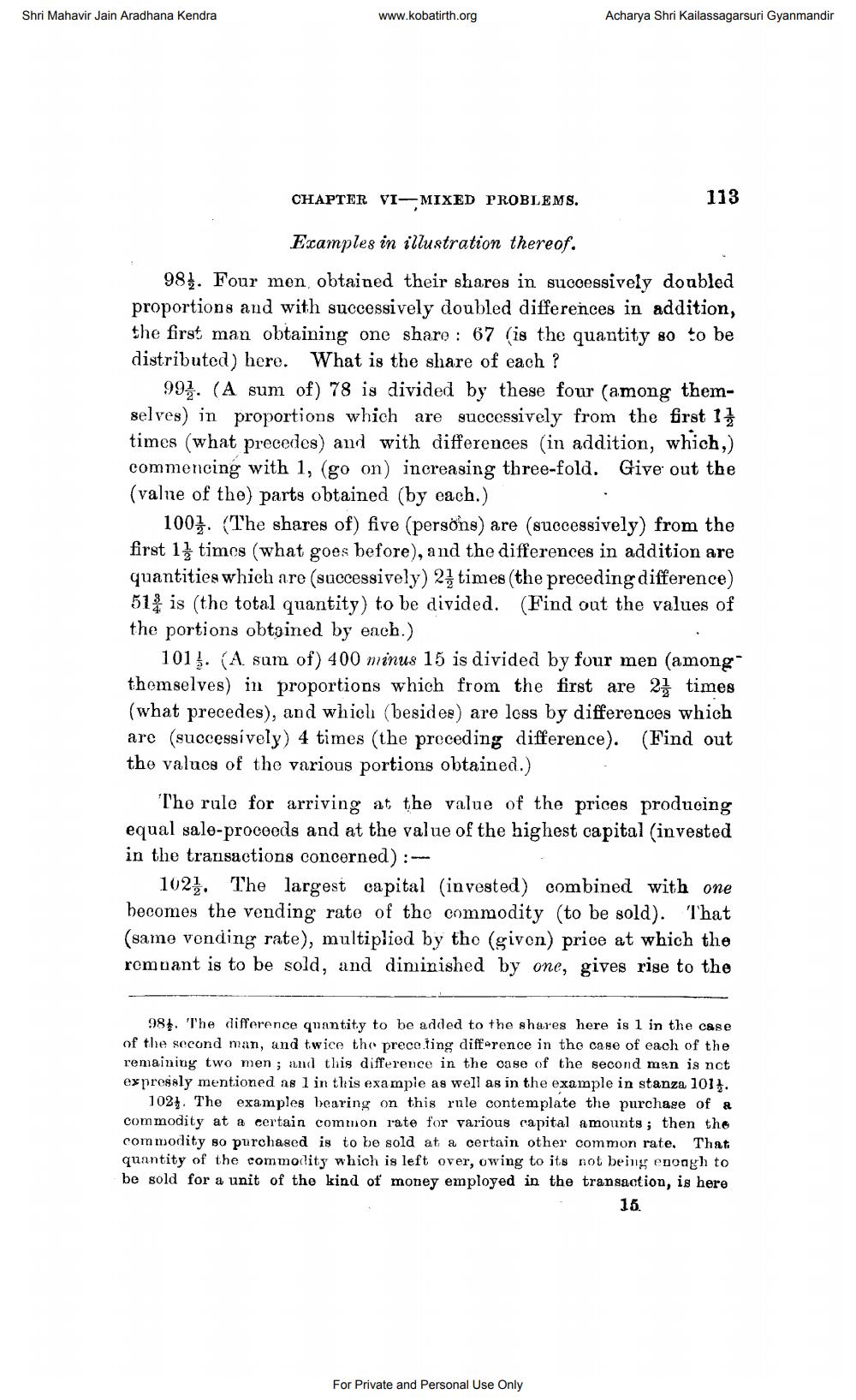________________
Shri Mahavir Jain Aradhana Kendra
www.kobatirth.org
Acharya Shri Kailassagarsuri Gyanmandir
CHAPTER VI-MIXED PROBLEMS.
113
Examples in illustration thereof.
981. Four men obtained their shares in sucoessively doubled proportions and with successively doubled differences in addition, the first man obtaining one share : 67 (is the quantity 80 to be distributed) here. What is the share of each ?
991. (A sum of) 78 is divided by these four (among themselves) in proportions which are successively from the first 11 times (what precedes) and with differences (in addition, which,) commencing with 1, (go on increasing three-fold. Give out the (valne of the parts obtained (by each.)
100%. The shares of) five (persons) are (successively) from the first 11 times (what goes before), and the differences in addition are quantities which are (successively) 24 times (the preceding difference) 51is (the total quantity) to be divided. (Find out the values of the portions obtained by each.)
101}. (A sum of) 400 minus 15 is divided by four men (among themselves) in proportions which from the first are 27 times (what precedes), and which (besides) are loss by differences which are (successively) 4 times (the preceding difference). (Find out the values of the various portions obtained.)
The rule for arriving at the value of the prices producing equal sale-proceeds and at the value of the highest capital (invested in the transactions concerned):
102]. The largest capital invested) combined with one becomes the vending rate of the commodity (to be sold). That (same vending rate), multiplied by the (given) price at which the rempant is to be sold, and diminished by one, gives rise to the
98. The difference quantity to be added to the shares here is 1 in the case of the second man, and twice the preco ting difference in the case of each of the remaining two men ; and this difference in the case of the second man is nct expressly mentioned as l in this example as well as in the example in stanza 1017.
102. The examples bearing on this rule contemplate the purchase of a commodity at a certain common rate for various capital amounts; then the commodity go purchased is to be sold at a certain other common rate. That quantity of the commodity which is left over, owing to its not being enoagh to be sold for a unit of the kind of money employed in the transaction, is here
15.
For Private and Personal Use Only




